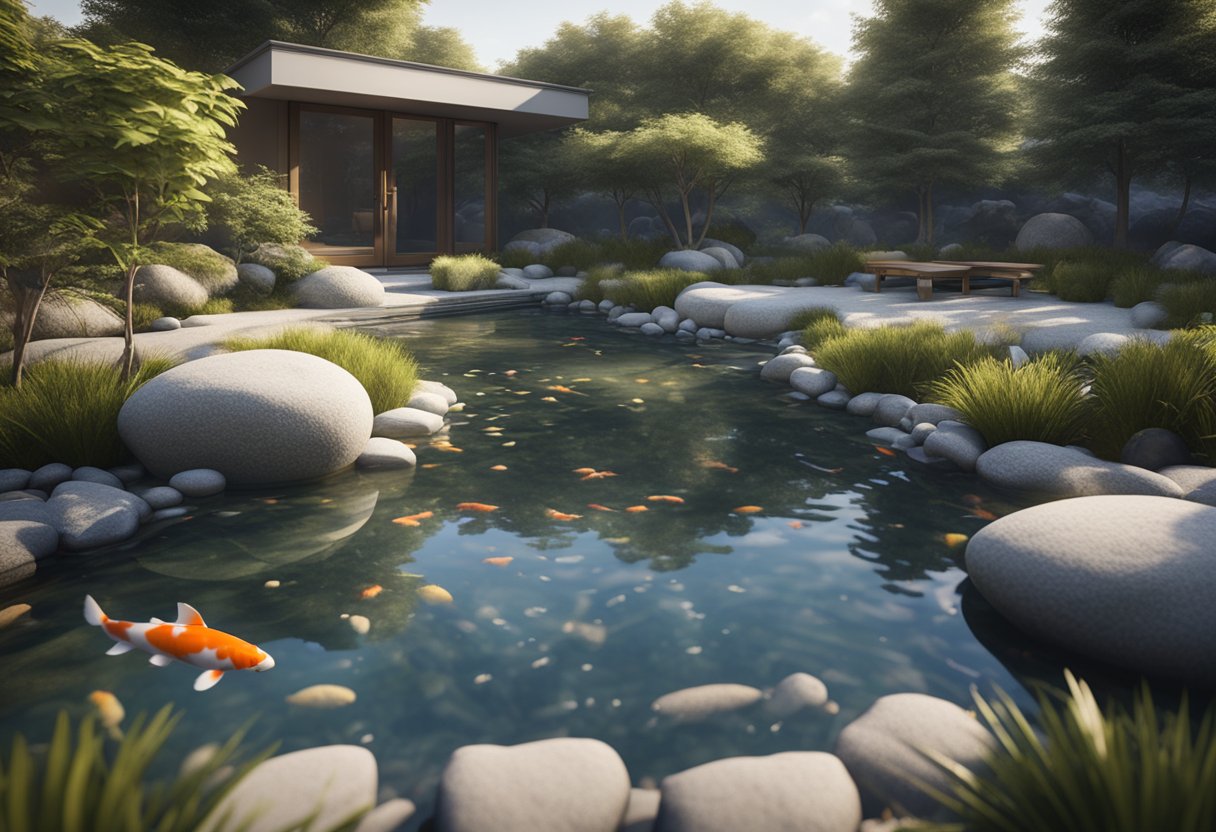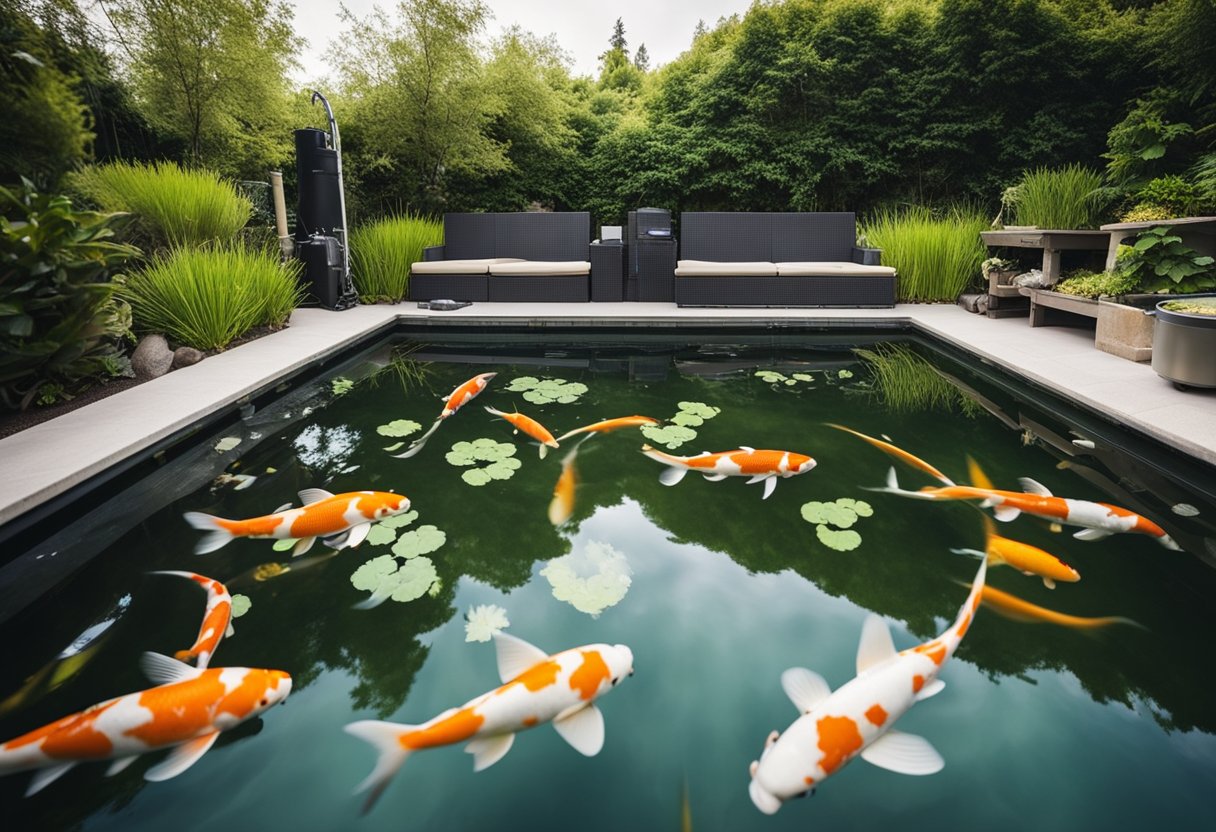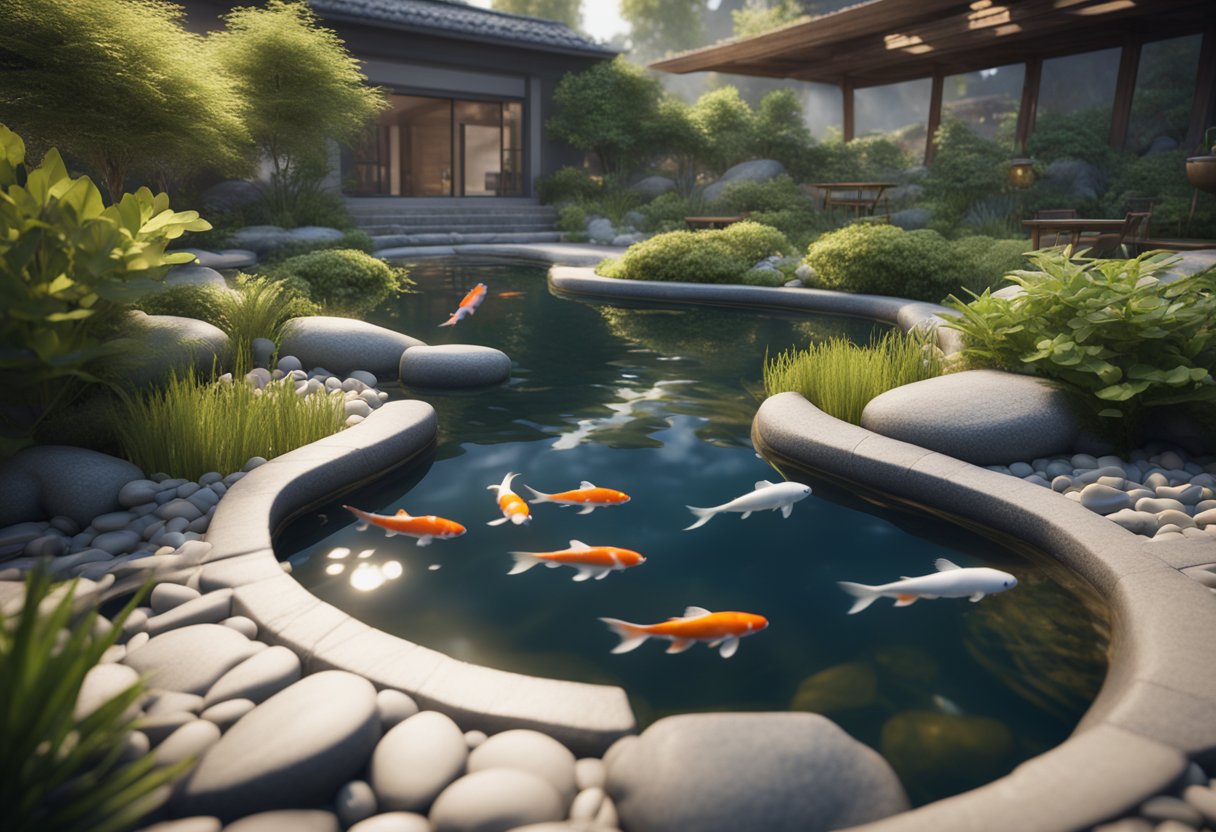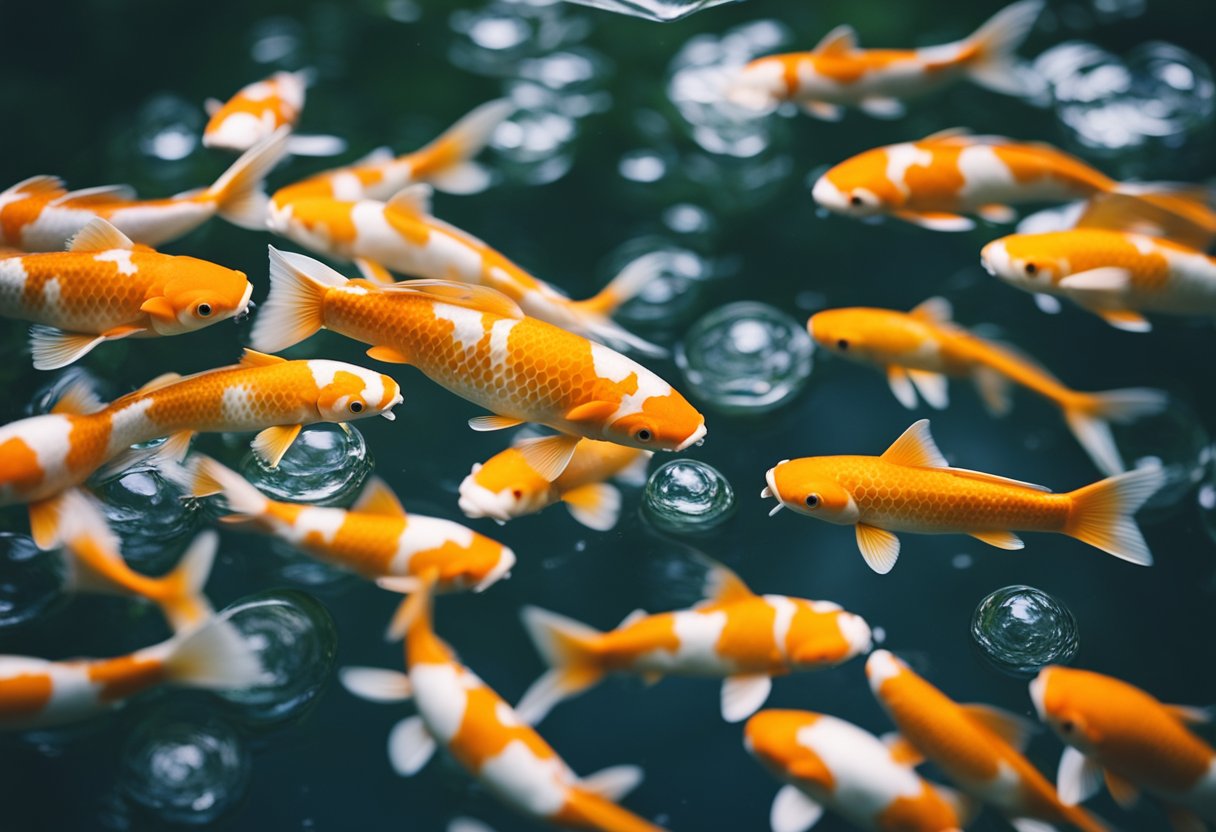Creating a stunning and functional koi pond involves careful consideration of various elements, including rock and gravel placement. The strategic positioning of rocks and gravel not only adds visual appeal but also provides numerous benefits for your koi and the overall ecosystem of the pond. In this article, we will explore the best practices for koi pond rock and gravel placement, discuss the types of rocks that work well in koi ponds, and provide valuable tips on how to create an enchanting koi pond design using rocks. Whether you are starting from scratch or looking to enhance your existing koi pond, this guide will help you achieve the perfect rock and gravel setup.
Selecting the Right Rocks for Your Koi Pond
When it comes to creating a stunning and functional koi pond, selecting the right rocks is crucial. The best rocks for a koi pond are not only visually appealing but also provide a safe and comfortable environment for your fish to thrive. Let’s explore the different types of rocks that are suitable for your koi pond and the factors to consider when making your selection.
Factors to Consider
When choosing rocks for your koi pond, there are several important factors to consider:
- Size: Opt for rocks that are large enough to make an impact but not too heavy or cumbersome to handle. They should be small enough to allow proper water flow throughout the pond.
- Shape: Look for rocks that have smooth edges and rounded shapes. Avoid sharp or jagged rocks that could potentially harm your koi.
- Composition: Choose rocks that are durable and able to withstand the elements. Avoid rocks that may release harmful substances into the water.
By considering these factors, you can ensure that the rocks you select are not only aesthetically pleasing but also safe and beneficial for your koi pond.
“The right rocks can transform a koi pond into a natural oasis, providing a beautiful backdrop for your fish and enhancing the overall ambiance.” – Koi Pond Enthusiast
Types of Rocks for Your Koi Pond
There are various types of rocks that are commonly used in koi pond setups. Let’s take a look at some popular options:
| Rock Type | Description |
|---|---|
| Basalt | A dark-colored volcanic rock that adds a dramatic touch to your pond. It is known for its durability and natural beauty. |
| Moss Rock | A type of sandstone with a mossy appearance. It provides a natural look and is often used for waterfalls and streambeds. |
| Limestone | A sedimentary rock that is available in various colors. It adds a touch of elegance to your koi pond and helps to maintain stable water pH levels. |
| Granite | A durable and versatile rock that comes in different colors. Granite is often used for creating stunning focal points in koi ponds. |
These are just a few examples of rocks that can enhance the beauty and functionality of your koi pond. Consider your personal preferences and the overall design of your pond when selecting the perfect rocks.
By carefully selecting the best rocks for your koi pond, you can create a visually appealing and safe environment for your fish. The right rocks can not only add an aesthetic touch but also provide hiding spots and areas for beneficial bacteria to colonize. Take the time to choose wisely, and your koi pond will be an oasis of tranquility and beauty.
Essential Considerations for Placing Rocks in a Koi Pond
When it comes to placing rocks in your koi pond, there are several key factors to consider. These considerations not only contribute to the aesthetic appeal of your pond but also ensure a safe and comfortable environment for your beloved koi. With proper rock placement, you can create ideal hiding spots for your fish, promote stability, and enhance the overall beauty of your pond.
Rock Stability
One of the most important considerations for placing rocks in a koi pond is ensuring rock stability. It’s crucial to select rocks that are durable and will not shift or move easily. Avoid using loose or unstable rocks, as they can pose a hazard to your fish and disrupt the balance of your pond. Securely position the rocks in such a way that they interlock and provide a solid foundation.
Safety for the Fish
When choosing rocks for your koi pond, prioritize the safety of your fish. Smooth and rounded rocks are preferable to rough or jagged ones, as they minimize the risk of injury to your koi. Avoid using rocks with sharp edges or protrusions that could potentially harm your fish. Additionally, ensure that the rocks are free of any harmful substances or toxins that may leach into the water and affect the health of your koi.
Ideal Hiding Spots
Koi fish naturally seek shelter and hiding spots to feel secure in their environment. Placing rocks strategically in your pond can provide these ideal hiding spots for your koi. Create small crevices and caves by positioning the rocks in a formation that allows your fish to retreat when they need privacy or protection. These hiding spots not only provide a sense of security for your koi but also add visual interest to your pond.
By carefully considering rock stability, fish safety, and the creation of ideal hiding spots, you can ensure that the rocks in your koi pond serve both functional and aesthetic purposes. Follow these essential considerations to create a beautiful and harmonious environment for your koi to thrive in.
Benefits of Gravel Placement for Your Koi Pond
When it comes to creating the perfect koi pond, the placement of gravel plays a crucial role in both the aesthetics and functionality of the environment. Incorporating gravel in your pond offers numerous benefits that contribute to the overall health and well-being of your koi.
- Water Filtration: Gravel serves as a natural filtration system, helping to remove impurities and debris from the water. As water flows through the crevices and gaps between the gravel, it undergoes mechanical and biological filtration, resulting in clearer and cleaner water.
- Bacteria Colonization: Gravel provides an ideal surface for beneficial bacteria to colonize. These bacteria play a crucial role in the nitrogen cycle, breaking down harmful substances such as ammonia and nitrites, and converting them into less toxic compounds. This biological filtration is essential for maintaining a healthy and balanced ecosystem for your koi.
- Prevention of Muck Buildup: Placing gravel in your koi pond helps prevent the accumulation of muck and sediment at the bottom. The gaps between the gravel allow water to flow freely, preventing stagnant areas where muck can accumulate. This not only improves water quality but also reduces the risk of disease and ensures a cleaner environment for your koi.
By considering the importance of gravel placement in your koi pond, you can create a thriving aquatic habitat that promotes the well-being of your koi and enhances the overall beauty of your pond.
Designing your Koi Pond with Rocks
Designing your koi pond with rocks allows you to create a visually stunning and natural-looking environment for your fish. By strategically incorporating rocks, you can enhance the overall aesthetics and functionality of your pond. In this section, we will explore different design ideas and techniques for incorporating rocks into your koi pond, using them as focal points, creating waterfalls, and implementing various placement strategies.
Creating Focal Points
One way to enhance the design of your koi pond is to create focal points using rocks. These focal points can draw attention to certain areas of the pond, adding visual interest and depth. Consider placing a grouping of larger rocks in a prominent location to create a focal point. By arranging them in a visually appealing manner, you can create a stunning centerpiece for your pond.
“The use of large rocks as focal points in a koi pond can create a sense of drama and intrigue, drawing the eye and adding depth to the overall design.” – Landscaping Expert, Mark Johnson
Adding Waterfall Features
Waterfalls are another excellent way to incorporate rocks into your koi pond design. By using rocks of varying sizes and shapes, you can create a natural-looking waterfall that not only adds beauty to your pond but also provides additional oxygenation and water circulation. Consider placing rocks along the edge of the pond to create a cascading effect, simulating a natural stream.




